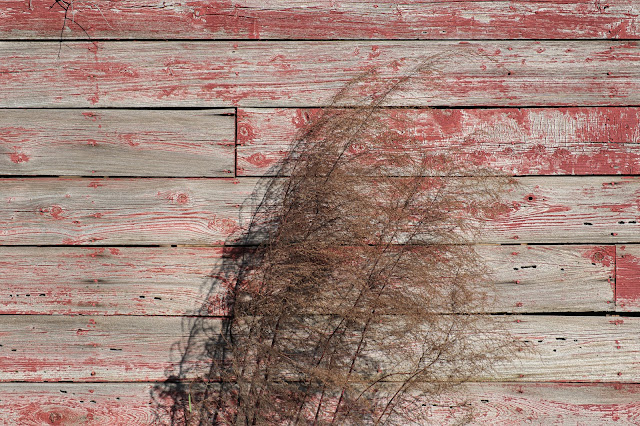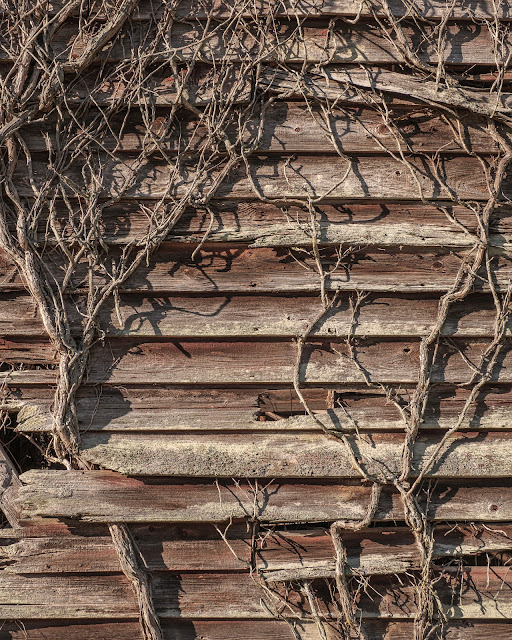A couple of days before the beginning of the new year, I finally received my Fujifilm X-T5. From order to arrival, it was almost 7 weeks. But that is okay. I'm happy that the camera is selling so well. Fujifilm doesn't get the best love from the full frame crowd and I'm a big cheerleader for the company as they genuinely seem to consult with a lot of photographers to produce the kinds of cameras 'photographers' want to use.
Taking it out of the box and holding it for the first time was a pleasant experience. The camera felt very familiar. It felt like an old friend. Even though it is a little smaller than the X-T4, it fell very good in my hands. In case you are interested, my little finger is able to rest on the front of the body. It doesn't hang off the bottom. But then I don't have gorilla hands. Everything about the camera was as I had hoped.
Shortly thereafter I started to configure most of the camera's settings in the same manner as my previous XT cameras. My X-2HS is configured slightly differently as the body, dials, buttons and such are just a little different. No surprises as the menus were also very familiar. I had no trouble finding items in the menu nor setting up the camera.
Initially, I didn't set up the "My Menu" items nor the various function buttons. The X-T5 has fewer Fn buttons than does the X-H2S so I plan on carefully considering how I want to use each one. I might miss the extra Fn buttons of the X-H2S, but that is a minor thing. Afterall, the extra buttons weren’t on the T4 or it’s predecessors and I did just fine. I'll save those settings for after I've used the camera for a while and decide how the function buttons suit me best and exactly what items I want in My Menu.
 |
So… I took the camera out the next morning and photographed two very different types of subjects. My goal was twofold. First, I wanted to ensure everything about the camera was working as it should and second, I wanted to put the camera through a couple of tough tests just to ascertain how it compares to other cameras I've owned. Forty megapixels is a lot for an APS-C sized sensor. In fact, the photosites are smaller than those on the Olympus OM-1 micro4/3 camera. Micro 4/3 has consistently garnered criticism for the sensor and photosites being too small to produce professional results. (Those of you who use micro 4/3 knows that is nonsense!) But, we'll see.
First, I photographed a bright silver Amtrak train coming almost directly at me, three-quarter backlit, clear blue sky with lots of reflections off the silver cars as well as specular highlights. A very high contrast scene with deep shadows of pine trees also in the frame. The train was traveling at approximately 79 mph, i.e., it was MOVING! Quite a challenge I would think for the AF system as well.
The camera was set for AF-C, Train Subject Detect, manual mode, 1/2000th sec. @ f/8, ETTR (+1 Exp. Compensation just to tax the sensor's dynamic range even more), Auto WB, Auto ISO (turned out to be ISO 1600), 15 fps, focus priority and had the 16-55mm f/2.8 lens attached. Files were configured for lossless compressed RAW.
As the train approached in the distance, I activated BBF focus AF (single AF square) then, seamlessly, the subject detect quickly took over. How do I know? Looking at the files on the LCD afterward, and even though my focusing square varied as to where it was on the train (due to me panning and zooming simultaneously as it approached), the files showed the actual focus point was right on the front of the locomotive, where it should have been with the subject detect AF. First test passed.
To tax the AF system even more, I zoomed out while autofocusing as the train got very near. I thought it was quite a test. The result was 24 of the 26 exposures were in sharp focus and 2 showed the front of the locomotive just a tiny bit soft, only recognizable when looking at the images at 100%. If the two images were important, they could easily be corrected in Topaz Sharpen AI or Topaz Photo AI. No complaints from me on this performance.
Editing the image files, I was able to easily pull down the way overexposed highlights as well as bring up the shadows nicely in proportion to the scene. Noise in the shadows was minimal and was easily taken care of by adding some noise reduction in Lightroom. The images were sharp and very detailed.
I’ll give the camera a “Pass with Flying Colors” on this test since it is not a speed demon like the X-H2S and 40mp is quite a bit of data to capture and move around. I was pleasantly surprised how well the camera handled this difficult situation. It exceeded my expectations, to be frank. I didn't expect 92% of the photos to be in sharp focus.
The second group of subject matter I photographed were some old, dilapidated country barns with bright gray weathered wood and dead vines clinging to the sides. Some of the wood had some old weathered red paint still clinging to the deeply textured boards. The silvery weathered wood in direct sunshine was pretty bright and it was juxtaposed next to the deep shadows of openings and holes in the sides of the barns as well as very dark interiors.
I shot this series using Aperture Priority, AF-C, BBF, Auto WB and Auto ISO. IBIS was activated as it was for the sequence above. Aperture was set at f/8, same lens as above. I purposely overexposed some compositions by 2 stops and underexposed some by 2 stops. Again, as a general setting, I kept the histogram ETTR. ISO turned out to be 160.
 |
| 16-55mm f/2.8 lens @ 48mm; 1/400th sec. @ f/8; ISO 160 (click to enlarge) |
The results were beautiful! I really like these images, especially how the quality of the winter light was retained. The textured wood, the intricate small details of the vines, the faded red as well as the pure blue sky all made for some very nice images. I was able to easily bring up the almost totally black shadows to show nice detail without generating much noise at all. Additionally, editing the images that I overexposed by 2 stops still allowed me to recover all highlight and shadow detail. After editing, they were indistinguishable from the properly exposed image files. The malleability of these files was much better than I expected. Again, the camera, sensor and image processor exceeded my expectations especially with so many photosites on an APS-C sized sensor. Fujifilm must have some magic dust they sprinkled on this camera.
At the time of this writing, I've only been out with the camera once. I cannot judge or form a long term opinion about the camera until I've used it for several months. However, from what I've seen so far, I am truly impressed with this sensor’s characteristics. It seems to have a very competent dynamic range, a relatively low noise profile and the colors and sharpness meet my picky standards. The colors actually seem to be even more pleasing than previous Fujifilm cameras I’ve owned. But that might be just me. I don’t know if they are a bit different but I like them. I had the film simulation set on Pro Neg S for reference. I plan on playing around with some of the other film simulations in LR as well just to see how they look.
 |
| 16-55mm f/2.8 lens @ 55mm; 1/280th sec. @ f/8; ISO 160 (click to enlarge) |
 |
| 16-55mm f/2.8 lens @ 23mm; 1/320th sec. @ f/8; ISO 160 (click to enlarge) |
 |
| This is the result of editing the above image. Again, I'm impressed with the capabilities of this new 40mp sensor. (click to enlarge) |
 |
| 16-55mm f/2.8 lens @ 40mm; 1/150th sec. @ f/8; ISO 160 (click to enlarge) |
 |
| 16-55mm f/2.8 lens @ 53mm; 1/170th sec. @ f/8; ISO 160 (click to enlarge) |
 |
| 16-55mm f/2.8 lens @ 45mm; 1/110th sec. @ f/8; ISO 160 (click to enlarge) |
So far, I’m in love with the camera, not only for the image quality, but for the size, form factor and, of course, the dials, knobs and menus. It is small, lightweight, feels good in my hand and, so far, is a real pleasure to use. This camera should serve me well for my intended purposes and how I plan on using it—landscapes, close-ups, macro, travel, etc. In other words, for more of a contemplative type of photography rather than for speed.
Let’s hope things continue to be as positive with the T5 in the future. I don’t expect any surprises. In fact, I think I will just enjoy using this camera regularly rather than testing it in every way as I have with my past cameras. I really enjoy using it so far. If I find something that surprises me in a negative way, I'll surely write about it and let you know.
Thanks for looking. Enjoy!
Dennis A. Mook
All content on this blog is © 2013-2023 Dennis A. Mook. All Rights Reserved. Feel free to point to this blog from your website with full attribution. Permission may be granted for commercial use. Please contact Mr. Mook to discuss permission to reproduce the blog posts and/or images.






No comments:
Post a Comment